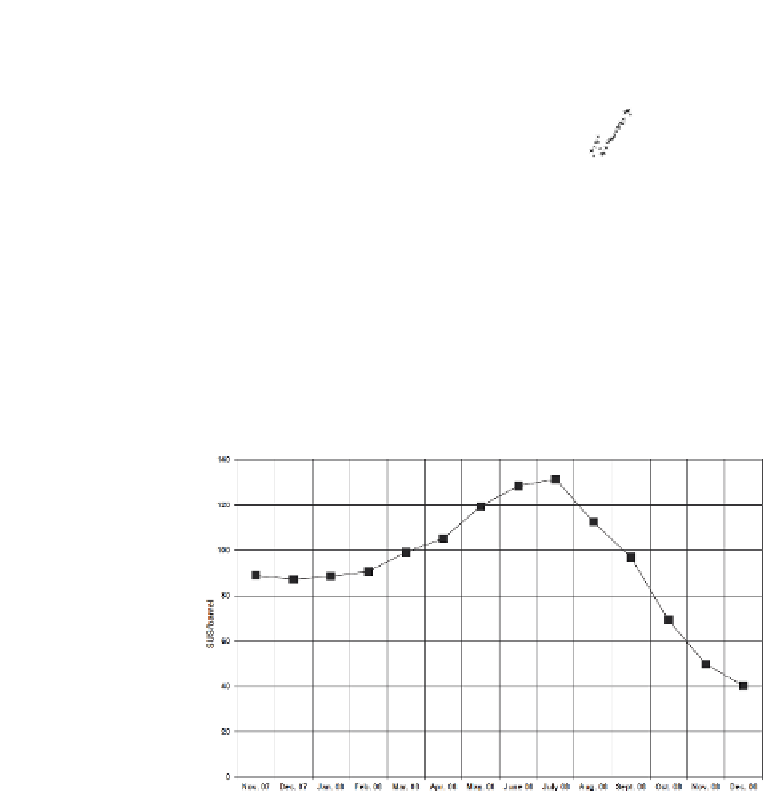Geology Reference
In-Depth Information
4.5
x 10
6
6
x 10
6
4
2027
5
2012
3.5
3
4
2.5
3
2
1.5
2
1
1
0.5
0
0
1900
1950
2000
2050
2100
2150
1900
1950
2000
2050
2100
2150
(a) Proven reserves
(b) Additional recoverable resources
Fig. 13.49 The Hubbert Peak applied to world oil production. Data based on proven reserves (a)
and additional recoverable resources (Masterset al., 1994) (b). Data obtained from BP (2011)
Fig. 13.50 The monthly average price of an oil barrel in 2008 (OPEC, 2012)
The depletion of one fossil fuel may lead to a greater consumption of the others
and as peak oil has already occurred, this will probably lead in the short to medium
term, to a more extensive use of natural gas and coal. Therefore, all three are
analysed collectively as if they were a single entity, assuming mutual replacement.
So, should no additional conventional fuel resources be found and production rate
remain as in 2009, the R/P ratio indicates that in 118 years, all conventional fossil
fuels could be completely depleted. Furthermore, as revealed by Fig. 13.52, the
theoretical peak of all conventional fossil fuels could be reached in 2031. Considering
additional recoverable resources, this peak shifts to 2089, meaning it is delayed
by only 60 years. This suggests that even if important discoveries are made, the
























































































































Search WWH ::

Custom Search